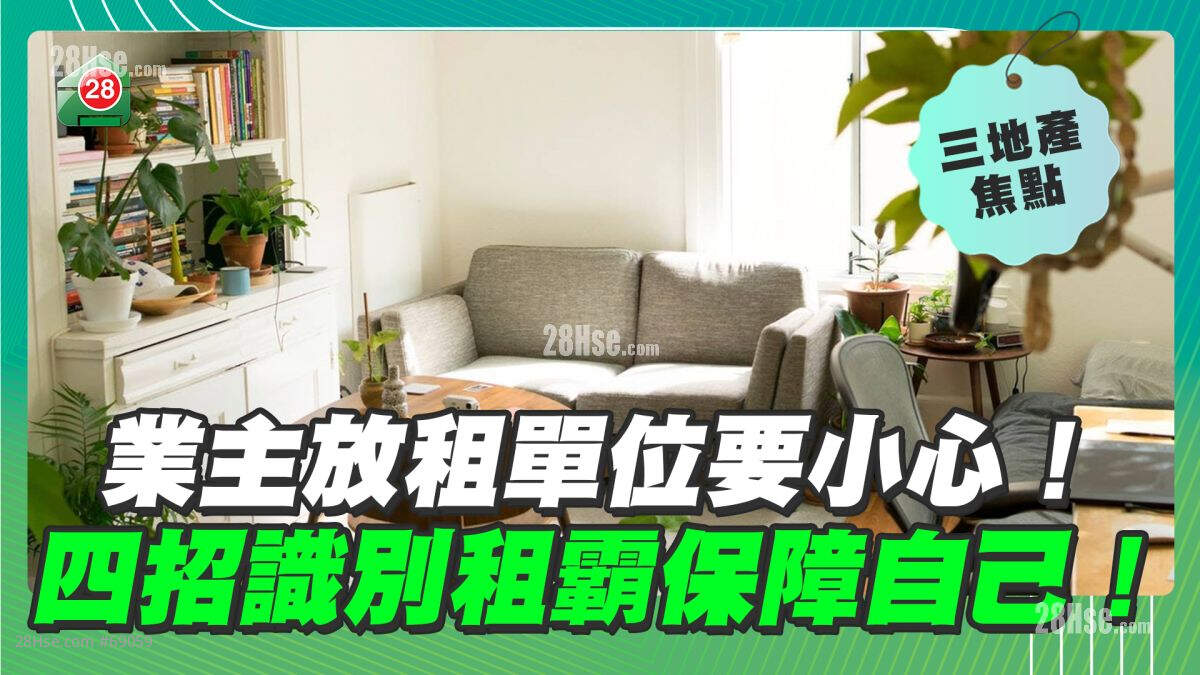A recent report by TVB’s Scoop highlighted a case involving a problematic tenant. The landlord had leased out a flat for HK$12,000 per month but, by mid-2024, the renter’s payments stopped, and the Water Supplies Department cut off water to the unit. Despite this, the occupant continued to reside there.
It later emerged that the tenant had been imprisoned, and his girlfriend had taken over staying in the flat. She claimed she couldn’t afford to pay the full rent upfront and could only make payments in instalments. The landlord, however, stated that no rent had been received at all. With such conflicting accounts, the situation turned into a “Rashomon” scenario, leaving it unclear who was telling the truth.
Problematic tenants are a common concern for landlords. Beyond the fear of unpaid rent, landlords also worry about potential property damage and the lengthy process of resolving disputes. So, how can landlords protect themselves?
One of the most important steps is to stamp the tenancy agreement and submit the CR109 form to protect your legal rights.
After signing the tenancy agreement, both parties must submit it to the Inland Revenue Department for stamping within 30 days. Only then does the agreement become legally binding. The stamping fee typically ranges from 0.25% to 1% of the rental amount, depending on the lease term.
Additionally, under the Landlord and Tenant (Consolidation) Ordinance, landlords must submit the CR109 form to the Rating and Valuation Department to officially record the tenancy. If the form is submitted within one month of signing the lease, there is no fee; however, late submissions incur a HK$310 charge.
One of the most important steps is to stamp the tenancy agreement and submit the CR109 form to protect your legal rights. After signing the tenancy agreement, both parties must submit it to the Inland Revenue Department for stamping within 30 days. Only then does the agreement become legally binding. The stamping fee typically ranges from 0.25% to 1% of the rental amount, depending on the lease term. Additionally, under the Landlord and Tenant (Consolidation) Ordinance, landlords must submit the CR109 form to the Rating and Valuation Department to officially record the tenancy. If the form is submitted within one month of signing the lease, there is no fee; however, late submissions incur a HK$310 charge.
Under Hong Kong law, if rent is not received within 15 days of the due date, landlords have the right to terminate the tenancy agreement and pursue legal action to recover the property. However, if the tenant pays all overdue rent before the landlord regains possession, they may still be allowed to stay in the property.
For rent arrears or claims under HK$75,000, landlords can file a case with the Small Claims Tribunal. For amounts exceeding HK$75,000, landlords must provide a stamped tenancy agreement and a copy of the CR109 form. Without these documents, courts will not process tenancy disputes.
Additionally, before signing a tenancy agreement, landlords should thoroughly assess the tenant’s financial situation and employment status. It’s advisable to request supporting documents such as payslips and work identification cards. If necessary, contact the tenant’s employer to verify their identity and income.
Landlords should be cautious of tenants who pay rent or deposits using cheques late at night or on weekends. Since cheques cannot be cleared immediately, there is a risk of receiving a bounced cheque. If the tenant has already received the keys, the landlord could suffer a financial loss. To avoid this, it’s better to request payment in cash or via bank transfer.
Some problematic tenants not only fail to pay rent but also damage the property. To mitigate this risk, landlords should take photos of the property before renting it out to document its condition. Additionally, landlords may want to consider purchasing landlord insurance. Many insurance plans are available, offering coverage for rent recovery, legal fees, and repair costs for property damage. The specific terms of coverage will depend on the insurance provider.
Like

